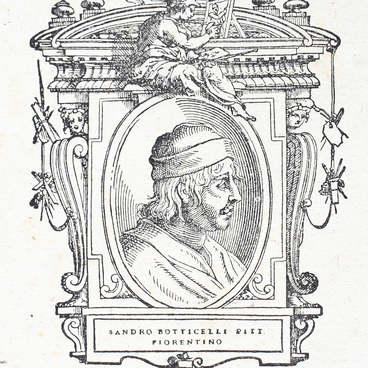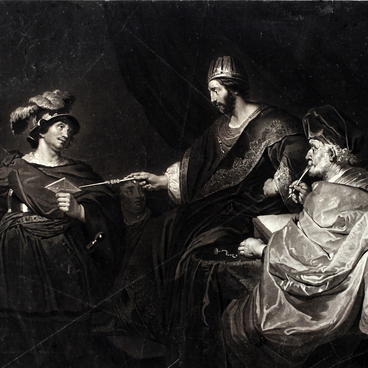This engraving was created by the German artist Georg Friedrich Schmidt. It is based on the portrait of the French artist Pierre Mignard painted by Hyacinthe Rigaud. The etching was made 48 years after the painting had been created. Thanks to this portrait and patronage by Rigaud, Schmidt was accepted into the Royal Academy of Fine Arts, while in 1755 the Prussian King Friedrich II appointed him a court engraver.
The Portrait of Pierre Mignard
Время создания
1739
Размер
42,8x34,7 cm
sheet: 49,8x34,7 cm; image: 42,9x33,2 cm
sheet: 49,8x34,7 cm; image: 42,9x33,2 cm
Техника
etching, chisel
Коллекция
0
Открыть в приложении#3
Georg Friedrich Schmidt
The Portrait of Pierre Mignard
#2
#5
Pierre Mignard was a history painter and a portraitist, a brother of the artist Nicolas Mignard. As early as at the age of 15 he received his first significant order: he was commissioned with painting a chapel at the manor place of Marshal de Vitry. Soon, under patronage of the marshal, the young artist joined the studio of Simon Vouet, the first Royal Painter. Pierre became a favorite of his teacher and almost married his daughter. Having stepped back from the good marriage, in early 1636 Mignard left for Rome where he studied works of Old Masters, painted portraits and was engaged in restoration of art works. To avoid being mixed up with his brother, Pierre assumed the byname ‘Of Rome’. At that time period he was commissioned portraits by Pope Urban VII, Duke de Guise, Cardinal Barberini, the Medicis, the d’Estes, the Pamphilis and others. His works made him a reputable first-class portrait painter. In 1656 Mignard returned to France and became a Royal family artist and the head of the Paris Academy of St. Luke.
He went through all the ranks and positions ath the Royal Academy of Fine Arts, was a Professor and a Principal, a Chancellor and a Director of Royal Art Museums and textile mills. Pierre Mignard died in 1695 with his paint brushes in his hands, when he was completing his “Self Portrait in character of St. Luke”, four years after Hyacinthe Rigaud had painted his portrait.
He went through all the ranks and positions ath the Royal Academy of Fine Arts, was a Professor and a Principal, a Chancellor and a Director of Royal Art Museums and textile mills. Pierre Mignard died in 1695 with his paint brushes in his hands, when he was completing his “Self Portrait in character of St. Luke”, four years after Hyacinthe Rigaud had painted his portrait.
#7
The heritage of the engraver Georg Friedrich Schmidt is around 300 boards. 19 of them were made by the artist when he was in service in Russia. Schmidt preferred to use chisel on copper. Closer to the end of his life he moved to Berlin and switched over to dry point and aquafortis, a mixture of concentrated hydrochloric and nitric acids. The artist cut drawing lines on a metal board coated with acid-proof composition of wax and resin, and then etched the image. A characteristic feature of that method was that it allowed the artist to rectify incorrect lines by coating them with varnish. At that time Schmidt engraved after a lot of painting originals by Rembrandt, copying his brushwork. Strokes by the German artist is smooth and steadfast, he was especially good at reproducing the cloth grain: velvet or silk. Some works by Schmidt are kept in the State Historical Museum in Moscow.
#8
The Irbit State Museum of Fine Arts
читать дальшескрыть
00:00
00:00
1x
The Portrait of Pierre Mignard
Время создания
1739
Размер
42,8x34,7 cm
sheet: 49,8x34,7 cm; image: 42,9x33,2 cm
sheet: 49,8x34,7 cm; image: 42,9x33,2 cm
Техника
etching, chisel
Коллекция
0
Открыть в приложении
Поделиться



